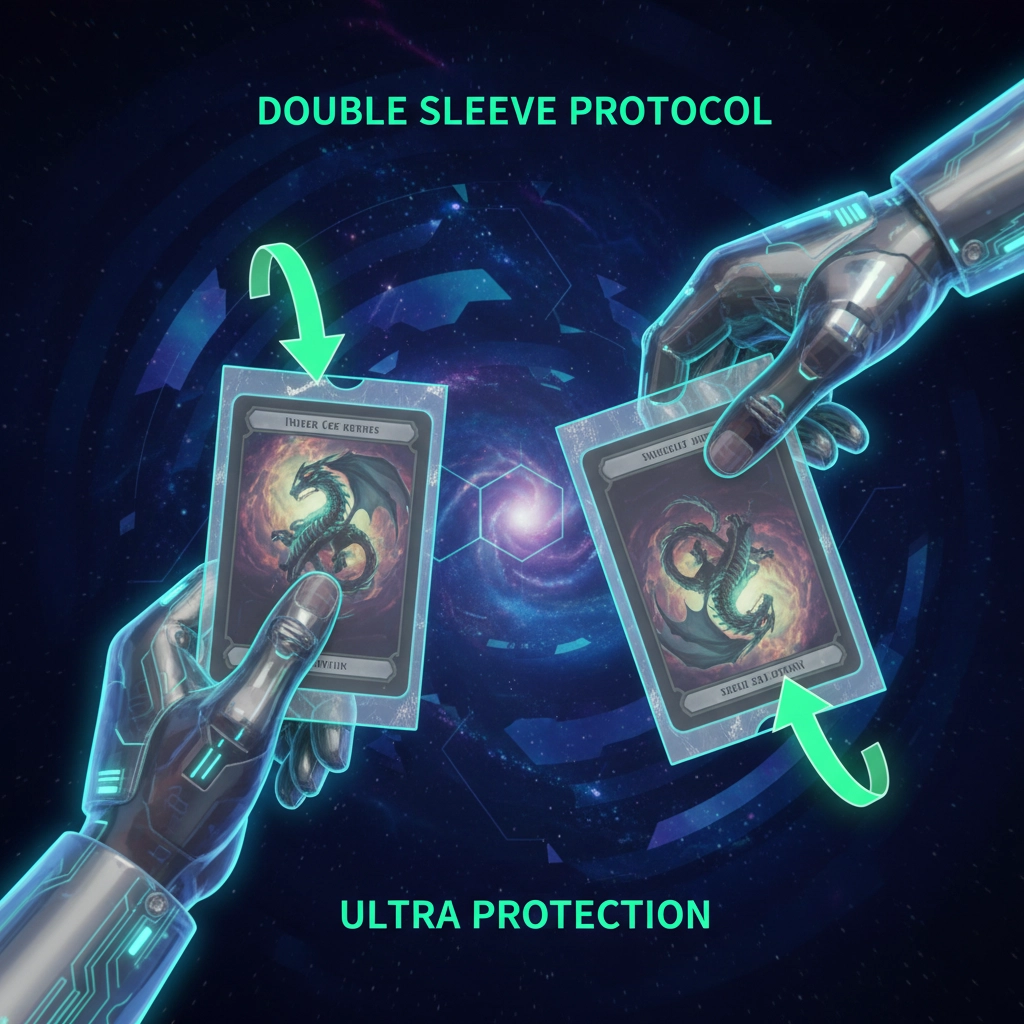7 Mistakes You're Making with Card Sleeves (and the Best Options That Actually Work)
- Dr. Mardis

- Oct 16
- 3 min read
Most collectors destroy their cards through improper sleeving. The following mistakes occur regularly.
Mistake 1: Using Only Penny Sleeves for Frequently Handled Cards
Penny sleeves are soft. Cards slip out. They slide when stacked. Removal from storage boxes becomes messy.
The flexibility provides no protection during handling. Cards bend inside the sleeve. Edge wear occurs. Corner damage increases over time.
Frequent reorganizing damages cards. Moving between decks damages cards. The sleeve fails its basic function.
Mistake 2: Skipping Double Sleeving for Valuable Cards
Single sleeves leave gaps. Air enters. Moisture enters. Debris enters.

Double sleeving blocks everything. Two sleeves with opposite orientations create a barrier. Inner sleeve absorbs damage during outer sleeve replacement. Your card remains untouched.
Years of sleeve changes compound this protection. Expensive cards require this protection.
Mistake 3: Wrong Orientation When Double Sleeving
Loading both sleeves from the same direction fails. Gaps remain. Air and debris still enter.
Correct method requires opposite orientations. Inner sleeve loads from top. Outer sleeve loads from bottom.
Dirt entering the top of outer sleeve must travel to bottom. Then reverse direction. Then squeeze between card and inner sleeve. This does not happen.
Mistake 4: Letting Inner Sleeves Slide Up
The inner perfect fit sleeve slides up. Bottom of card becomes exposed. Double sleeving becomes pointless.
Solution requires proper technique. Start card into outer sleeve. Press down on front face with index finger. Apply counter-pressure with thumb on back through outer sleeve. Keep thumb stationary. Slide index finger down.
This prevents sliding. Practice required.
Mistake 5: Using Side-Loading Perfect Fits
Side-loading perfect fits seem convenient. They eliminate sliding problems. They compromise protection quality.
Side openings create vulnerability points. Debris enters more easily. Properly oriented top-loading sleeves provide superior protection.
Convenience does not justify reduced protection.

Mistake 6: Long-Term Storage in Card Savers
Card savers protect during shipping. Their tight fit damages cards over extended periods. Cards compress for months. Cards compress for years.
Removal requires bending the card. Grading companies cut them open for this reason. Avoid for storage purposes.
Ship with card savers. Store without card savers.
Mistake 7: Ignoring Thickness and Box Compatibility
Sleeves add thickness. Sleeved cards may not fit in original boxes. Deck boxes designed for unsleeved cards fail. Storage compartments become too small.
Sleeved cards become slippery. High stacks slide. High stacks topple. Storage solutions must accommodate sleeved cards specifically.
Plan storage before sleeving. Not after.
The Best Options That Actually Work
Perfect Fit Sleeves
KMC perfect fits provide snug fit. Cards cannot move inside sleeve. Borders remain protected. Footprint stays minimal.
These work as inner sleeves. Double sleeving requires these.
Standard Clear Sleeves
Dragon Shield Standard Sleeves offer thickness. Rigidity exceeds penny sleeves. Frequent handling becomes safe.
These work as outer sleeves. Durability increases. Card visibility remains high.
Double Sleeving Configuration
Perfect fit inner sleeve loads from top. Standard outer sleeve loads from bottom. Comprehensive protection results.
Time investment: 5 minutes for 60-card deck plus sideboard. 7 minutes for 100-card Commander deck. Protection justifies time.

Single Sleeving Applications
Display cards require single sleeving only. Binder storage works with penny sleeves. Handling frequency determines protection level.
Cards handled during gameplay require double sleeving. Cards stored permanently require single sleeving minimum.
Professional Solutions
Armored Cards provides professional-grade protection. One touch magnetic holders eliminate sleeving entirely for display purposes.
Storage becomes permanent. Access remains instant. Protection exceeds any sleeving method.
Implementation
Assess your collection. Determine handling frequency per card. Valuable cards handled frequently require double sleeving. Valuable cards never handled require magnetic holders.
Cheap cards require penny sleeves minimum. No protection guarantees damage.
Storage solutions must accommodate protection method chosen. Plan accordingly.
Results
Proper sleeving prevents damage. Improper sleeving causes damage. Card value preservation requires correct implementation.
Most collectors implement incorrectly. Most collectors damage their cards unnecessarily. These mistakes occur despite good intentions.
Protection methods exist. Implementation determines effectiveness.
Comments